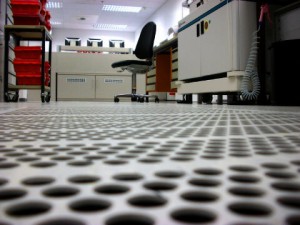Hard drives contain actuator heads that float just above the surface of the platters (discs coated in magnetic material that stores data).
When the actuator heads fail, data is inaccessible — and in many cases, the heads need to be replaced (or “swapped”) with heads from a donor drive.
Symptoms of failed actuator heads include (but are not limited to):
- Clicking, whirring, or grinding sounds.
- Slowdowns when booting or accessing files.
- System crashes and error messages.
- Data corruption.
- Error codes in UEFI or BIOS.
You should never attempt to swap the heads of a damaged hard drive, for several reasons. We’ll explain why below.
First, some good news: We’re here to help. Datarecovery.com operates full-service laboratories in each of our four locations, and we provide risk-free evaluations for all hard drives, solid-state drives, and other types of data storage media.
Our services feature a no data, no charge guarantee: If we’re not able to restore the files you need, you don’t pay for the recovery attempt. To learn more, call us at 1-800-237-4200 or submit a case online.
For modern hard drives, head swaps require adjustments to the drive firmware.
With limited exceptions, hard drive components aren’t interchangeable.
Modern hard drives have complex firmware. Firmware is written to the main printed circuit board (PCB) processor and the integrated chips, and it acts as operating instructions for the hardware.

The actuator heads of a hard drive.
For most newer models, the firmware is drive-specific. It contains error-handling functions created for the existing actuator heads. Even if you swap out the heads with an identical drive, the firmware will require modification in order to return readable data.
Without those modifications, the hard drive will be unable to determine whether sectors are “good” or “bad.” If the drive marks good sectors as unreadable, recovery becomes much, much more difficult.
To modify firmware, you’ll need special hardware designed for the task. It’s not a simple process: Even if you’re able to find detailed tutorials for your hard drive model, you’ll need to spend months learning about firmware design in order to make the necessary adjustments without risking data loss.
Physical hard drive repairs must be performed in a certified cleanroom.
Another reason to avoid do-it-yourself data recovery: You probably don’t have access to a certified cleanroom.

The floor of a data recovery cleanroom.
Hard drives are extremely precise devices. Dust and other contaminants can get between the platters and actuator heads, causing permanent damage. A cleanroom is a protected environment with dedicated controls to prevent media contamination.
Clean benches, which operate on the same principles as a full cleanroom, are also acceptable for data recovery work. However, clean benches can cost $10,000 or more — much more than the cost of data recovery.
In addition to contamination, you’ll have to consider the other potential challenges of swapping hard drive heads. The spacing between the heads must be maintained during removal and installation. For some hard drive models, this requires specialized tools (hard drive head combs). After data extraction, you may need to perform logical data recovery for corrupt files.
Without an evaluation, you can’t know whether a drive has failed actuator heads.
Finally, if your hard drive hasn’t undergone a physical evaluation, you don’t really know whether a head swap will fix the issue.
Many hard drive issues can present the symptoms commonly associated with head failures. Firmware corruption, electronic damage, and spindle seizures can cause physical symptoms (such as the infamous “click of death”).
Even with years of training, data recovery engineers cannot diagnose an issue via its symptoms; they must perform a detailed physical evaluation in order to create an effective recovery strategy.
Simply put, if you don’t have appropriate training and access to specialized equipment, hard drive head swaps can cause permanent data loss. We strongly discourage customers from attempting data recovery on their own — and not just because it’s our business.
A failed data recovery attempt can have disastrous consequences. Once the platters have been substantially damaged, your files are gone forever — even if you take the drive to a professional data recovery provider.
Trust the world leader in hard drive data recovery.
Datarecovery.com provides risk-free evaluations for all hard drives, and our no data, no charge guarantee gives you peace of mind as your case progresses. By taking a non-destructive approach, we provide consumers with the best option for professional data recovery while minimizing the cost of the process.
If you need to recover data from a damaged hard drive, we’re ready to help you take the first steps. Call us at 1-800-237-4200 or submit a case online.





